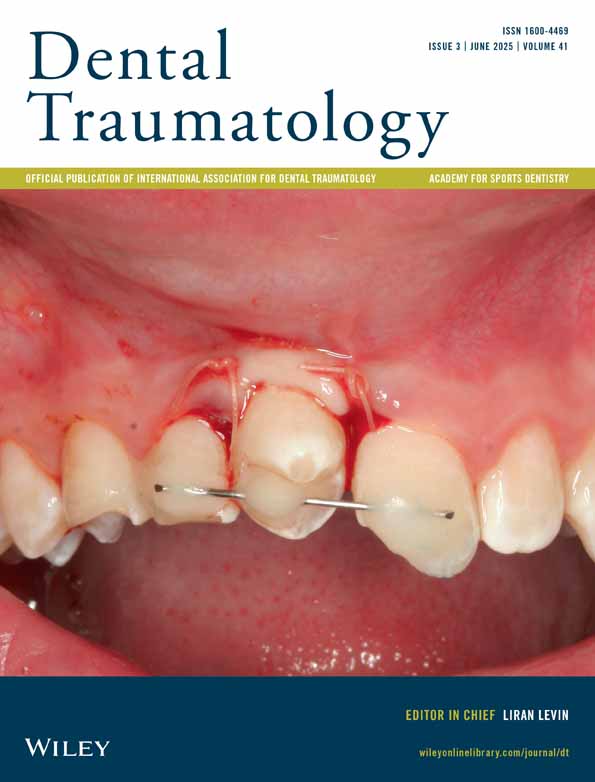An Experimental Study on Design and Fabrication of Sports Laminate Mouthguard for Protection Against Intraoral Injuries
Funding: The authors received no specific funding for this work.
ABSTRACT
Background/Aim
Sports mouthguard should be designed and fabricated adequately. The purpose was to propose a criterion for fabricating sports laminate mouthguard with adequate thickness for protect orofacial structures.
Materials and Methods
Ethylene vinyl acetate sheet (Sports Mouthguard) was fabricated using a pressure former. Sports laminate mouthguard was designed as the first layer covered the labial, buccal, and occlusal sides, and the second layer covered the first layer. Four conditions were investigated; the combination of the sheets forming the first and second layers was 2 mm and 3 mm sheets (2 mm + 3 mm), 3 mm and 2 mm sheets (3 mm + 2 mm), 2 mm and 4 mm sheets (2 mm + 4 mm), and 4 mm and 2 mm sheets (4 mm + 2 mm). Laminate mouthguard thickness was measured at the labial, buccal, and occlusal sides. Statistical analyses were performed by two-way ANOVA and Bonferroni method for the measurement areas and laminate conditions.
Results
Laminate mouthguard thickness was significantly differed among the measurement areas (p < 0.01). The average thickness at the labial side was 2.83 mm (2 mm + 3 mm), 2.89 mm (3 mm + 2 mm), 3.51 mm (2 mm + 4 mm), and 3.53 mm (4 mm + 2 mm). Mouthguard thickness on the conditions of 2 mm + 4 mm and 4 mm + 2 mm became significantly larger compared to 2 mm + 3 mm and 3 mm + 2 mm at the labial, buccal, and occlusal sides (p < 0.01). Adequate thickness could be obtained on the conditions of 2 mm + 4 mm and 4 mm + 2 mm.
Conclusions
Sports laminate mouthguard fabricated using 2 mm sheet with 4 mm sheet could offer adequate thickness at the labial, buccal, and occlusal sides. This finding would be one of the criteria for fabricating sports laminate mouthguard.
Conflicts of Interest
The authors declare no conflicts of interest.
Open Research
Data Availability Statement
The data that support the findings of this study are available from the corresponding author upon reasonable request.




